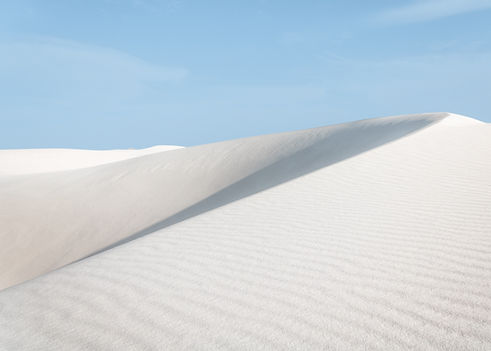
Empower
Growth


David Bowling
Fall Leaf Color - Why Does it Change
Our research group studies how environmental and climate change affect the carbon and water cycles of forests, grasslands, and shrublands of the mountain West. We investigate 1) how living things are affected by biological, physical, and chemical factors, 2) how living things modify their environment, and especially 3) processes that control cycling of carbon, water, and nutrients within ecosystems. This work is interdisciplinary, merging basic science approaches from ecology, hydrology, atmospheric science, and geochemistry. We use a combination of field observations and instrumentation, manipulative experiments, and modeling.

McKenzie Skiles
How desert dust influences snow melt and water supply
My research interests include snow hydrology, light absorbing particulates in snow/snow energy balance, remote sensing of the cryosphere, and cryosphere-climate interaction. My research methods combine numerical modeling with laboratory analysis and field/remotely sensed observations. One of my main research trajectories is investigating the impacts of mineral dust/black carbon deposition on snow in the Western US, where changing snowmelt patterns have important implications for water security.

John Lin
Utah Air Quality
John Lin is a Professor in the Department of Atmospheric Sciences and the Associate Director of the Wilkes Center for Climate Science & Policy. He has over 20 years of experience researching the emissions and transport of greenhouse gases and atmospheric pollutants, publishing over 100 peer-reviewed journal papers to date. He was selected as a Earth Leadership Fellow in 2022 and participates regularly in national and international research efforts such as with the World Meteorological Organization and the European Union. John's research group (http://lair.utah.edu/) is carrying out greenhouse gas and air quality observations in the Salt Lake area, as well as in the Uinta Basin. John also works regularly with satellite observations from NASA to determine carbon emissions from cities around the world. He has recently served on the Great Salt Lake Strike Team to synthesize scientific knowledge and inform policy decisions surrounding the Great Salt Lake. John received his AB, AM, and PhD degrees from Harvard University.

Paul Brooks
From Alta to Great Salt Lake: The Secrets of The Greatest Snowmelt on Earth
Paul Brooks is a professor of Hydrology and Biogeochemistry, founding director of the Interdisciplinary Graduate Program in Hydrology and Water Resources at the University of Utah, director of the Wasatch Environmental Observatory, and Fellow of the American Geophysical Union. Prior to joining the faculty at UU in 2014, he was a professor in the Department of Hydrology and Water Resources at University of AZ and director of the National Science Foundation funded Center for the Sustainability of semi-Arid Hydrology and Riparian Areas.
His research focuses on the interactions between climate, water, ecosystem structure, and society with particular interests in seasonally snow-covered mountains. As a first generation college student, Paul recognizes the responsibility that comes with the privilege of higher education and is committed to training the next generation of professionals and to translating the results of basic academic research to real world application.

Austin Green
Wildlife Migratory Habits / Trail Cams
Austin joined Sageland Collaborative in early 2024 and is so excited to be on the team! He received his Ph.D. from the University of Utah under the tutelage of Dr. Cagan Sekercioglu in the Biodiversity and Conservation Ecology Lab. His doctoral research involved creating and co-running Wildlife Watch, which he then used to answer an assortment of ecological questions about how human influence alters wildlife behavior and distribution across Utah and abroad using cutting-edge statistical modeling. With the project lending itself well to community and student involvement, Austin then began leading an undergraduate research lab at the University of Utah through the Science Research Initiative, which he continues today.

Laura Vernon
Great Salt Lake: Decreases in lake level = increases in attention and opportunity
Laura Vernon is the Great Salt Lake Basin Planner with the Utah Department of Natural Resources Division of Water Resources. For nearly 20 years she has worked with federal, state, and local governments and industry leaders on contemporary planning and environmental policy issues in the West. With a Master’s in Public Administration and BA in Psychology, her education and professional experience focuses on land use and water planning, public involvement, socioeconomic analyses, project management and strategic planning. She has worked on numerous exciting and innovative Great Salt Lake-related projects over the last 10 years including the development of the 2013 Great Salt Lake Comprehensive Management Plan and the recent explorations of the economic and ecological impacts of a declining Great Salt Lake. Currently, Laura is managing the first-ever Great Salt Lake Basin Integrated Basin Plan.

William Anderegg
Mountain Forests in a Changing Climate
Dr. William Anderegg is the director of the Wilkes Center for Climate Science and Policy and an Associate Professor in the School of Biological Sciences at the University of UTah. Dr. Anderegg has been recognized by the National Science Foundation’s Alan T. Waterman Award, National Science Foundation CAREER Award, Blavatnik Foundation National Laureate in Life Sciences, Web of Science Global Highly Cited Researcher, and Packard Foundation Fellow for Science and Engineering. He was a NOAA Climate & Global Change Postdoctoral fellow at Princeton, and earned a B.A. in Human Biology and Ph.D. in Biology from Stanford University.